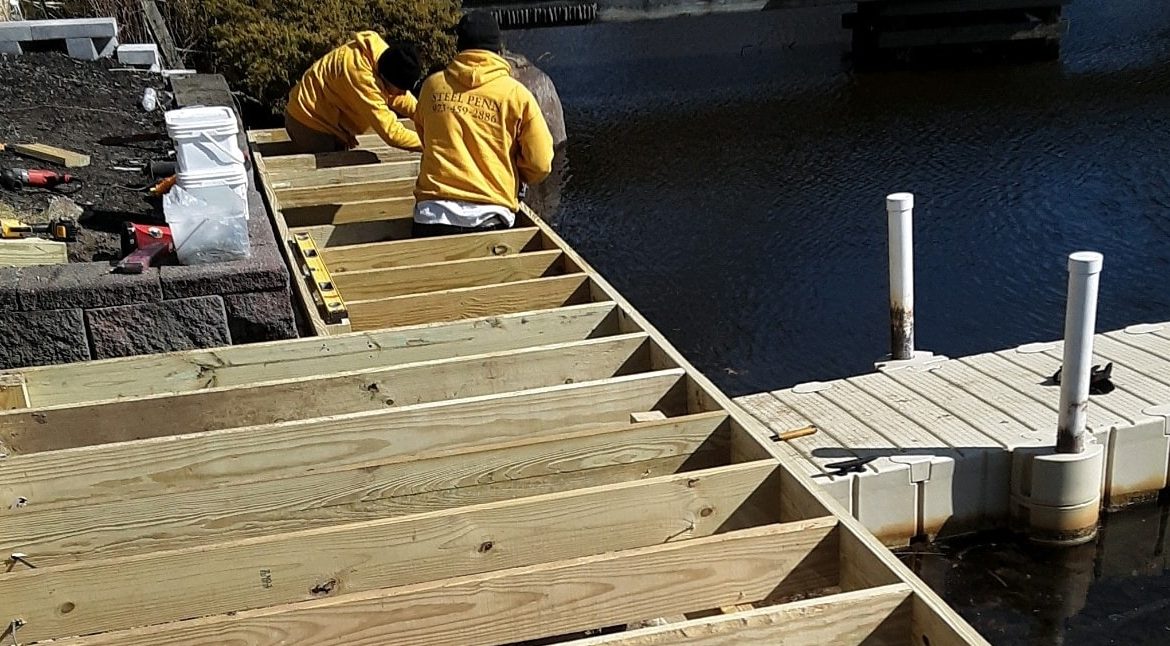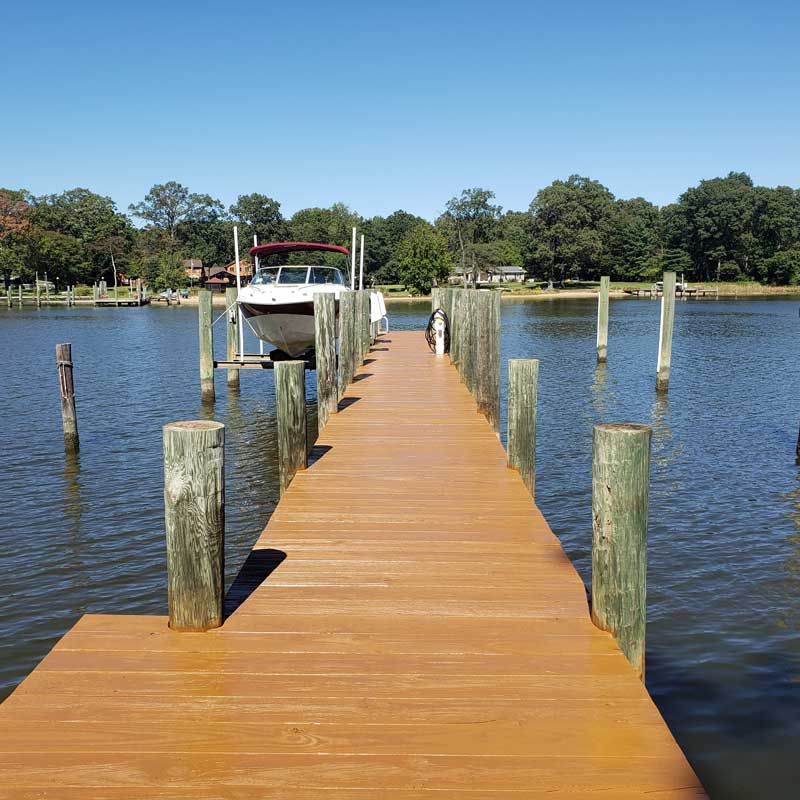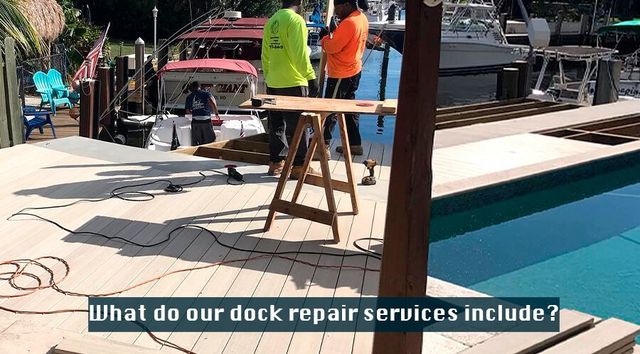Why Regular Maintenance Can Lower Future Dock Repairs
Wiki Article
Effective Dock Repair Work Techniques: Ensuring Architectural Honesty
Making certain the architectural stability of anchors via effective fixing strategies is vital for the long life and safety of aquatic centers. This entails a multi-faceted strategy starting with extensive examinations making use of sophisticated modern technologies like sonar devices and remotely operated cars (ROVs) to find both noticeable and concealed problems. Subsequently, selecting the appropriate repair service products, such as composite materials and corrosion-resistant alloys, is critical for longevity. Architectural reinforcement methods, consisting of the execution of cross-bracing systems and load-distribution plates, play an important duty in mitigating anxiety factors. Nonetheless, the significance of these methods comes to be noticeable when exploring sophisticated fixing approaches and preventative maintenance techniques.Evaluating Dock Damages
Examining dock damages is a vital first step in ensuring the architectural stability and safety of any docking center. Key facets to take a look at include the dock's foundation, pilings, decking, and hardware (Dock Repairs).Structural designers or certified inspectors typically perform these evaluations utilizing specialized devices and methods. Underwater inspections may employ sonar equipment or remotely operated automobiles (ROVs) to find submerged damage. Above water, aesthetic inspections are matched by using dampness meters and other diagnostic devices to reveal underlying concerns not right away noticeable to the nude eye.

Choosing Repair Materials
Selecting the proper fixing materials is an essential step in the dock repair process, one that directly affects the long life and performance of the fixed structure. Material selection should be driven by aspects such as environmental conditions, load-bearing demands, and compatibility with existing dock parts.In enhancement to wood, composite materials are increasingly preferred due to their sturdiness and reduced maintenance demands. Compounds, generally made from a blend of plastic and timber fibers, provide exceptional resistance to rot, insects, and UV damage. For steel docks, selecting corrosion-resistant alloys such as galvanized steel or marine-grade aluminum is vital to protect against rust and make certain architectural honesty in saline water problems.
Epoxy resins and marine-grade sealers are vital for fixing fractures and securing joints, giving a water-proof obstacle and enhancing the dock's total stamina. By carefully choosing premium materials, dock repair services can accomplish resilient results, thus safeguarding versus future destruction and making certain safe, trustworthy use.
Structural Support Methods
Efficient architectural support techniques are essential in making certain the stability and durability of dock repair work. One essential technique includes making use of steel or composite reinforcement bars (rebar) within concrete frameworks. Rebar gives extra tensile stamina, preventing fractures and distributing loads more uniformly. This method is especially reliable for docks revealed to hefty tons or rough environmental problems.Another important method is the application of fiber-reinforced polymers he has a good point (FRP) These materials use high strength-to-weight proportions and excellent resistance to corrosion, making them optimal for enhancing concrete or wood anchors. FRP can be used in strips or sheets and bound with epoxy materials to improve architectural stability.
Supporting and anchoring systems likewise play a vital function in architectural reinforcement. Cross-bracing, using metal or wood beam of lights, can neutralize lateral forces, decreasing swaying learn the facts here now and activity. Anchoring systems, such as helical piers or driven heaps, provide a secure structure by moving tons to deeper, extra secure soil layers.
Finally, the assimilation of load-distribution plates can assist disperse weight more evenly throughout the dock's surface area, reducing local stress and anxiety factors. These strategies collectively make sure that docks stay safe and robust, capable of standing up to the roughness of their operational atmosphere.
Advanced Repair Techniques

One more innovative strategy entails undersea welding, which allows for fixings to be carried out without the requirement to dewater the area. This method is particularly advantageous for dealing with structural problems in submerged dock elements, making certain very little disturbance to procedures. Enhanced welding techniques, combined with robotic systems, provide accuracy advice and dependability, thus expanding the lifespan of the dock.
Additionally, cathodic protection systems are executed to avoid rust in metal dock structures. By utilizing sacrificial anodes or amazed existing systems, these methods efficiently reduce the electrochemical processes that lead to product damage.
Lastly, advanced surveillance innovations, such as architectural wellness surveillance (SHM) systems, give real-time information on the condition of dock structures. These systems enable proactive maintenance and timely interventions, eventually guaranteeing the long-term architectural honesty of the dock.
Upkeep and Prevention
Maintenance and prevention are fundamental concepts that underpin the longevity and safety of dock structures. Regular inspections are vital, enabling early discovery of deterioration, potential weak points, and environmental influences. A proactive strategy, including routine look for corrosion, rot, and architectural changes, mitigates costly repair services and lengthens the dock's functional life.Safety nets must include applying protective layers to metal elements to defend against rust and utilizing cured timber to stand up to degeneration. Furthermore, making sure appropriate water drainage and air flow can protect against water accumulation, which is a typical source of architectural deterioration. Including quality materials and adhering to manufacturer guidelines during building and repair service stages additionally play essential functions in improving resilience.

Educating workers in dock upkeep ideal practices makes sure consistent application of safety nets. Leveraging technological advancements, such as drones for assessments and sensing units for real-time monitoring, can better enhance upkeep initiatives. By focusing on maintenance and prevention, dock proprietors can make certain architectural honesty, functional safety and security, and cost-effective administration over the dock's life expectancy.
Verdict
In conclusion, preserving the structural integrity of marine centers requires detailed dock repair work techniques. Comprehensive inspections using advanced tools discover both noticeable and hid damages, while the selection of appropriate repair materials boosts sturdiness. Applying structural reinforcement approaches addresses stress and anxiety factors successfully. Advanced repair service methods, paired with routine maintenance practices, make certain the dock stays safe and functional under diverse environmental conditions. Embracing these methods considerably prolongs the lifespan and performance of aquatic facilities.Making certain the structural integrity of docks with efficient repair work strategies is paramount for the long life and security of marine facilities.Picking the proper repair products is an essential action in the dock reconstruction process, one that straight affects the longevity and performance of the repaired structure.Reliable structural reinforcement methods are vital in making certain the stability and longevity of dock fixings. By focusing on maintenance and avoidance, dock proprietors can make certain architectural stability, functional security, and economical administration over the dock's lifespan.
In conclusion, maintaining the architectural integrity of aquatic facilities necessitates detailed dock repair techniques.
Report this wiki page